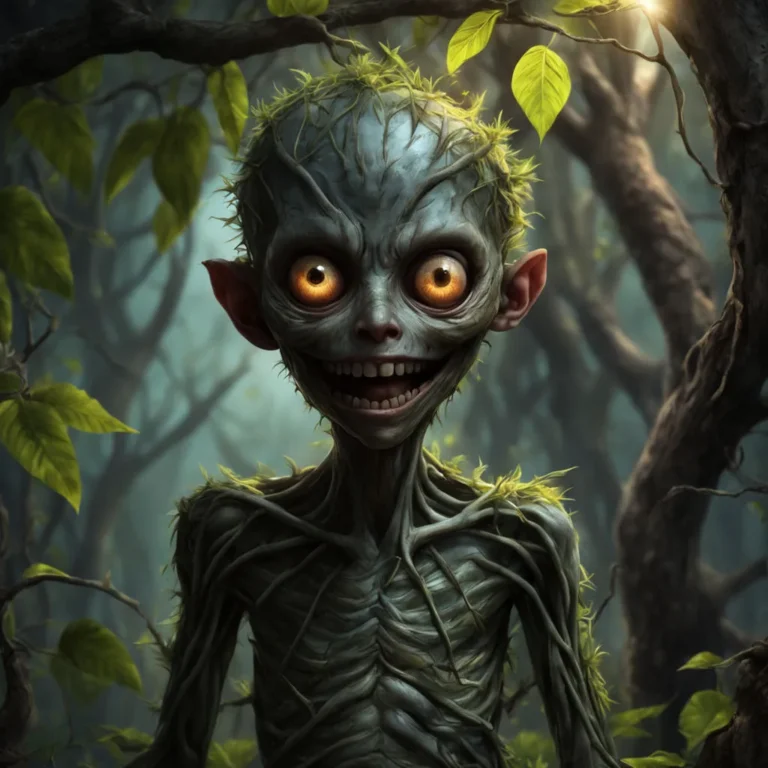The Legend of Munja or Munjya: A Demon of Brahmanic Origin

What is Munja or Munjya Spirit?
The legend of Munja, has been a famous Indian Folklore for ages with deep roots within the Brahman community. This spectral figure, often depicted as a restless spirit of a Brahmin boy who met an untimely or violent death, just after completing the mundan ceremony. During the ceremony a sacred thread is tied around the waist containing a girdle made of munja grass. The boy is known as Munjya when he ties the munja grass girdle. The legend of Munja shows how the Indian Folklore combines society and spiritual beliefs.
The Origins of Munja
According to the Hindu myth, the Munja is the spirit of a Brahmin boy who died prematurely, before completing crucial rites. The term “Munjya” is derived from the sacred grass (Munja grass) used in Hindu rituals. These spirits haunt the places where they lived or died, particularly banyan trees, temples, or abandoned sites.
The Dual Nature of the Brahmadaitya
The Brahmadaitya is a complex figure, reflecting both reverence and fear. On one hand, it is respected for its Brahmanic origins, embodying the sanctity and wisdom associated with Brahmins. On the other hand, it is feared as a malevolent entity capable of causing misfortune or harm. Stories of Munja or Brahmadaitya in Bengali folklore often explore themes of responsibility, devotion, and the negative effects of losing one’s spiritual focus.
The Munjya, Mundan or Yajnopavita Ceremony
Among the many religious traditions within the Brahman community is the Yajnopavita, also known as “Poite or mundan”. This sacred ceremony marks the transition of a Brahman boy, aged between 7 to 13, into Brahmanhood. Making his entry into formal education and to recite the revered Gayatri Mantra. The Poite ceremony involves holy offerings and rituals performed unto a havan and the boy’s knot with the sacred thread. A symbol of his new spiritual responsibilities and status.
According to legend, if a boy dies within ten days after his Poite ceremony, he is transformed into the mythical ghost called Munja. The Munjya is believed to have a sadistic nature and haunts a Pipal tree. This ghost is said to seek out vulnerable victims, perpetuating its malevolent influence
Invoking the Wrath of Munja
The Munja’s wrath can be invoked when a victim disturbs or insults its abode, the sacred Pipal tree. There are various accounts of individuals who have pelted the tree with stones, introduced domestic or human waste, or consumed liquor while sitting beneath it. The Munjya ghost typically targets girls and women, with many reports indicating that women who disposed of meal leftovers, such as bones, near the tree.
Manifestations of Munjya's Anger
The Munja avenges insults to its abode in furious and often terrifying ways. In the stories of Munja you will often see how he pelted stones at mischievous children. Also, the legends take a darker turn with more severe tales. Victims of the Munja’s wrath are said to be haunted relentlessly, with some possessed until they fall gravely ill or even die. There are also accounts of the Munjya pricking its victims with thorns or scorching them with fire.
Avoiding the Munjya's Wrath
To avoid the wrath of such a ghost, Indians believe it is crucial to refrain from any actions that might attract the Munja’s attention. Villagers often build platforms, known as “Paar,” around the Pipal tree and tie sacred threads around its bark as a sign of respect and protection. These measures are intended to honor the tree and pacify the spirit, reducing its anger.
Role of Exorcists
Exorcists play a significant role in dealing with Munja hauntings. They are reported to use various methods to ward off the Munjya from its victims, with water being a common tool. The sprinkling of blessed water is believed to purify the affected individual and drive away the malevolent spirit. This practice highlights the importance of ritual purity and the use of sacred elements in maintaining spiritual and physical well-being.
Story of Munjya in Indian Movie
The makers of the highly acclaimed horror comedy Bollywood movie, Stree, are returning with yet another spine-chilling and humorous venture based on the folklore of Munja. After the success of Stree, which received praise from both audiences and critics and recorded an impressive box office collection, the filmmakers are ready to captivate viewers again with their new horror film, Munjya.
Innovations in Indian Cinema
In the latest Munjya movie, Producer and founder of Maddock Films Dinesh Vijan, will break new ground in Indian cinema by featuring the country’s first CGI (Computer-generated Image) character in a leading role. This innovative approach is expected to add a unique and thrilling dimension to the film, blending advanced technology with traditional storytelling.
As anticipation builds, fans of Stree and horror comedy enthusiasts alike are eager to see how the legend of the Munja will be brought to life on the big screen. With the creative team that delivered the success of Stree behind this new project, Munjya movie promises to deliver a perfect mix of scares and laughs, making it a highly awaited release in the genre.
Conclusion
The legend of the Munja is a potent reminder of the intertwining of folklore, religious beliefs, and social customs in Indian culture. It highlights the significance of respecting sacred spaces and traditions, while also reflecting deeper societal values and taboos, particularly concerning women’s roles and behaviors. These stories and practices illustrate the deep-seated cultural beliefs and traditions surrounding supernatural entities in India. They serve as both a means of explaining and controlling the unknown and as a way of reinforcing social norms and respect for sacred spaces. The legend of the Munja, with its blend of fear and reverence, continues to be a significant part of Indian folklore, reflecting the intricate relationship between the spiritual and the everyday lives of the people.

